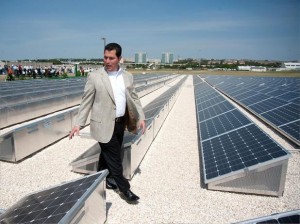
In 2010, the market for solar power on college campuses was over $300 million in the U.S., or 5.4% share of of the US total of 956 MW. Since 2009, the median project size has grown six fold. Only five states installed more solar in 2010 than the 52 MW installed on U.S. campuses.
One of the reasons for the growth is the decrease in cost (40% over the last four years) and new financing mechanisms that make it cheaper. It also helps campuses to hedge against rising electricity prices and stabilize costs. Not to mention the opportunity to educate students and future professionals about the benefits of alternative energy.
AASHE’s said its new database is designed for higher education solar advocates to browse success stories at campuses of a similar type, size and location and drive further solar development on campuses. Users of the database can find examples like the University of San Diego, which took advantage of federal and state incentives through a Solar Power Purchase Agreement to install 5,000 panels on 11 campus buildings, providing up to 15 per cent of the campus’ electricity at below market rates and with little upfront cost.
AASHE recruited the sponsorship of AMSOLAR as part of its strategy to promote on-campus solar power. “We are very pleased to have AASHE member and supporter AMSOLAR sponsor the PV database. As part of their sponsorship, AMSOLAR has agreed to serve as a technical resource, fielding questions from the campus sustainability community,†said Paul Rowland, executive director of AASHE. “We think that is critical, because nobody knows the ins and outs of designing, installing and financing solar projects like professionals in the industry.”
Via Sustainable Business.
.
You should follow us here.






Another reason why colleges and universities have taken the lead with solar is their time perspective. While businesses worry about quarterly and annual returns on investments, colleges and universities think about things like “generational equity.” How much of their endowments should be used for today’s students, and how much should be reinvested for the next 100 years, etc. Once anyone looks at energy on a 10 year or longer basis, installing solar power systems that will have zero fuel costs in the future makes a lot of sense.